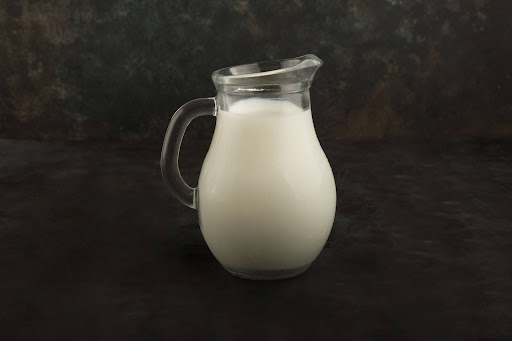
If you’re a pumping mom looking to simplify your milk storage routine, the pitcher method for breast milk might be the game-changer you’re looking for. The pitcher method involves collecting all pumped milk from 24 hours into a large container, such as a sterilized pitcher, to streamline milk collection and storage.
This increasingly popular method means that the collected milk from each pump session is pooled together in one large container, making milk collection from multiple sessions more organized. It’s simple, efficient, and perfect for moms juggling frequent pump sessions, especially those returning to work or exclusively pumping. The method offers several advantages, including saving space and reducing the hassle of handling multiple storage containers throughout a busy day.
In this article, we’ll break down:
- How the pitcher method works
- Who it’s best suited for
- Tips for doing it safely
- Benefits vs. drawbacks
- How freeze-dried breast milk offers a longer-term, flexible solution for moms who want to store milk without daily stress
What is the Pitcher Method?
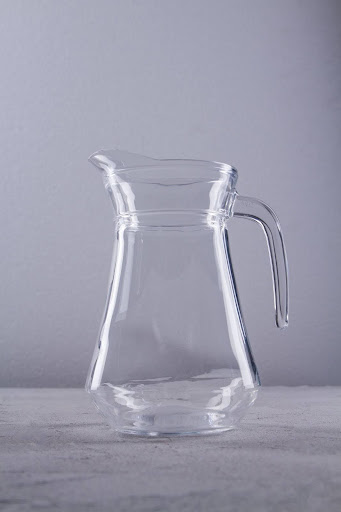
The pitcher method refers to a breastmilk storage approach where human milk pumped throughout the day is added to a common storage container—such as glass containers or plastic containers—for storing breastmilk in the fridge. At the end of the day, combining milk from different pump sessions creates a consistent day’s milk supply, which is then mixed and divided into feeding bottles or freezer bags in the desired amounts. Pooling milk in this way can help you achieve full bottles for your baby’s next day’s feedings.
This method is typically used over a 24-hour period, meaning any milk older than 24 hours should be used or frozen before the cycle restarts. Always use the oldest milk first to ensure freshness and maintain milk quality.
While it may sound simple, this method can drastically cut down on the time and mental energy you spend managing your milk supply. It also helps you feel more in control—especially during high-stress weeks or growth spurts when baby’s feeding needs change rapidly. Mixing milk helps balance foremilk and hindmilk, ensuring your baby receives a well-rounded nutrient profile. Remember, human milk composition can vary, with milk produced at night containing different hormones than daytime milk, which can affect your baby’s sleep and circadian rhythm.
When mixing cold or cool milk, ensure all milk is at the same temperature to avoid bacterial growth; current research shows combining milk at different temperatures is generally safe, but cooling freshly expressed milk before adding it to the pitcher is recommended. Finally, always clean pump parts thoroughly to maintain hygiene and safe breastmilk storage.
How to Do the Pitcher Method (Step-by-Step)
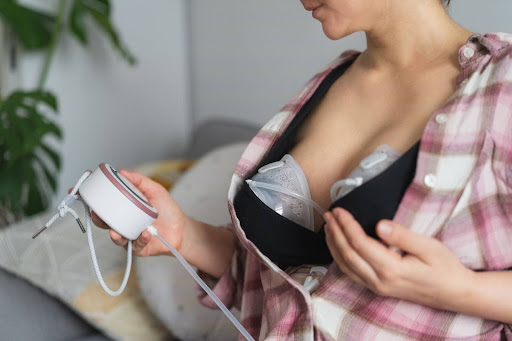
Here’s how to follow the pitcher method safely and effectively:
- Choose a Clean Pitcher
Use a large, dedicated, sanitized container—glass containers or BPA-free plastic containers are best for breastmilk storage. Some parents use large mason jars or breast milk pitchers designed specifically for storing breastmilk. Look for storage containers with a secure lid to prevent odor absorption or spills. - Cool Freshly Pumped Milk Before Combining
This is very important. Freshly pumped milk should be cooled in the refrigerator before it’s mixed with cool milk already in the pitcher. Mixing cold and warm milk at different temperatures can increase the risk of bacterial growth, so always ensure both are at the same temperature before combining milk. - Combine Milk from All Pump Sessions Within 24 Hours
Add each new batch of cooled, collected milk from multiple sessions to the pitcher throughout the day. Keep the pitcher refrigerated between uses and avoid leaving it out on the counter between sessions. - Mix Gently to Even Out Nutrient Distribution
Before pouring milk into bottles or bags, gently swirl the pitcher. Combining milk in this way helps ensure even distribution of nutrients and consistency across feedings. - Portion or Freeze Before 24 Hours Pass
At the end of the day, distribute the milk into storage bags or feeding bottles. Label and freeze if needed, making sure to use the oldest milk first for optimal storage of breastmilk. Safely manage any remaining milk by discarding anything older than 24 hours still sitting in the pitcher to ensure freshness and safety.
Understanding Pooling Milk with the Pitcher Method
When using the pitcher method, you’ll gather pumped milk from each session and, after cooling it in the refrigerator, add it to the pooled milk already in your container. This process helps create a consistent supply of breast milk, blending milk from different times of day for even fat content and nutrients. It’s especially helpful for moms who pump frequently or want to simplify their daily routine.
To keep your pooled milk safe, always cool freshly pumped milk before mixing it with previously cooled or frozen milk. This step is crucial for preventing bacterial growth and ensuring your baby’s milk stays fresh. For best results, store your pooled milk in a food-grade plastic or glass container with a tight-fitting lid—mason jars or dedicated breast milk pitchers work well.
Pooling breast milk using the pitcher method can also help regulate your milk supply and reduce the risk of lactose overload, since you’re mixing milk from several pump sessions into one container. By using this method, breastfeeding mothers can enjoy a more organized approach to breast milk storage, making it easier to keep up with their baby’s needs and minimize leftover milk at the end of the day.
Who Is the Pitcher Method Best For?

The pitcher method is ideal for:
- Exclusive Pumpers who pump multiple times per day or have multiple sessions or pump sessions throughout the day
- Working moms who want to simplify their routine before or after work, especially if they have a busy day
- Moms who want to even out fat content and milk quality from each pump session
- Parents who prefer batch prepping bottles in the evening for the day’s feedings and the next day’s feedings
- NICU moms or caregivers with multiple feeding helpers who benefit from a pre-mixed daily supply
There are several advantages to using this method, especially for those with frequent next pumping sessions. It helps organize milk for the day’s feedings and the next day’s feedings by pooling milk from multiple sessions into one container.
It works especially well for moms who pump at regular intervals, since the milk collected is fairly consistent across the 24-hour window. It’s also helpful when coordinating with caregivers, daycare centers, or partners, making the feeding process more predictable and less stressful.
Benefits of the Pitcher Method
There are several advantages and pros of the pitcher method for breast milk storage. Here’s why so many moms love this method:
Using a pitcher saves space and takes up less space in the refrigerator compared to storing multiple small bottles, making it easier to keep things organized and reducing clutter.
When pooling milk from multiple pump sessions, you can often combine enough to create a full bottle for feeding, which is convenient for both storage and feeding routines.
Efficiency
Instead of cleaning and storing 6–8 separate bottles each day, you can simply use one container to collect and store all your milk. This not only cuts down on dishes, prep time, and cleanup at the end of a long day, but also saves space and takes up less space in your refrigerator compared to multiple bottles.
Even Nutrient Distribution
Milk pumped at different times of day can vary in composition. Morning milk often contains more volume, while evening milk may be higher in fat. Combining milk from different sessions helps balance foremilk and hindmilk, ensuring your baby receives consistent nutrition with each feeding. Mixing it all together helps provide consistent nutrition across feedings.
Less Waste
Combining smaller amounts of milk into one pitcher allows you to portion more accurately and avoid throwing out unused leftovers. Any remaining milk at the end of the day can be safely stored or used for future feedings. You can tailor bottle sizes to your baby’s appetite more easily.
Easier to Prep Bottles
At the end of the day, prepping all your bottles at once streamlines the feeding process for the next day. This organized approach makes it easy to have bottles ready for the next day’s feedings. You can even plan ahead for night feeds, sending your future sleep-deprived self a small thank-you.
Safety Tips for the Pitcher Method
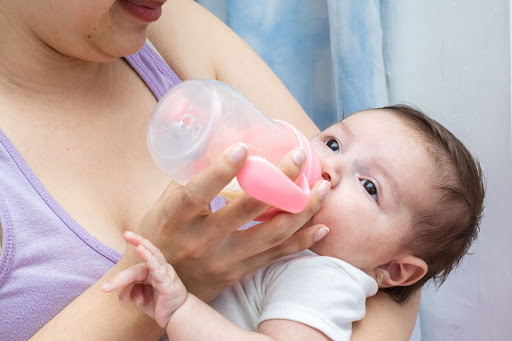
Like any method involving breast milk, safety is key. Here’s how to ensure safe usage:
- Always cool new milk before adding it to the pitcher. Mixing cold and warm milk at different temperatures can increase the risk of bacterial growth, so only combine milk that is at the same temperature. Let freshly expressed milk cool in the fridge before mixing with stored milk.
- Store the pitcher at the back of the fridge where the temperature is most stable.
- For breastmilk storage, use appropriate storage containers such as glass containers or BPA-free plastic containers with tight-fitting lids. Avoid plastic containers with the recycling number 7.
- Label the pitcher with the date and time of the earliest milk inside, and always use the oldest milk first to ensure freshness and prevent spoilage.
- Use a dedicated container and sterilize it daily.
- Clean all pump parts, bottles, and storage containers thoroughly after each use to prevent contamination.
- Don’t mix milk collected across multiple days—stick to a 24-hour window.
- Follow established guidelines for storing breastmilk and breastmilk storage to keep your milk safe for your baby.
To further minimize contamination risk, use a clean funnel or pour spout when transferring milk, and avoid dipping used bottles or spoons into the pitcher.
Can You Freeze Milk Collected Using the Pitcher Method?
Yes! After mixing the milk in the pitcher, you can freeze it in bags labeled with the earliest pumping date. Before freezing, make sure the milk is stored in the refrigerator to keep it fresh. Always use the oldest milk first to ensure freshness and proper rotation, which helps avoid storing old milk too long.
However, frequent freezing and thawing cycles can sometimes result in nutrient degradation, and that’s where freeze-drying your breast milk can offer a better alternative for long-term storage.
Traditional Storage vs. Freeze-Dried Breast Milk
The pitcher method is great for short-term efficiency when storing human milk—but if you’re building an inventory or want to eliminate the stress of daily pumping and storage, freeze-dried breast milk from BoobieJuice may be the smarter solution. Both methods are suitable for storing human milk, but they differ in storage duration and convenience.
| Feature | Pitcher Method | Freeze-Dried Breast Milk |
| Storage Life | 4 days (refrigerated) | 3+ years (unopened) |
| Portability | Requires refrigeration | Lightweight, no fridge |
| Nutrient Preservation | Good if used promptly | Excellent—retains up to 95% of nutrients |
| Risk of Waste | Moderate | Low—rehydrate only what you need |
| Daily Maintenance | High (must prep daily) | Minimal (stockpile during high supply) |
With freeze-dried milk, you can preserve surplus from your most productive pumping days and use it on demand when life gets hectic or supply dips.
Combine Methods for Maximum Flexibility
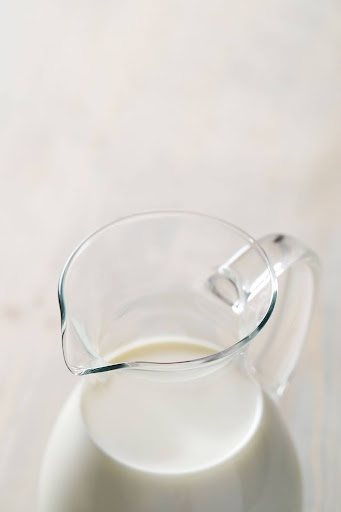
Good news—you don’t have to choose just one method.
Here’s how many moms use both:
- Use the pitcher method for daily feedings to keep things simple and consistent.
- Freeze-dry extra milk using BoobieJuice during high-output weeks or growth spurts.
- Keep your freeze-dried stash on hand for travel, daycare, emergencies, or low-supply days.
This combined approach is especially helpful for moms with a busy day who need flexibility. It takes pressure off of daily pumping and gives you ultimate flexibility with zero waste. You’re free to pump when it works for your schedule, not the other way around.
FAQs: Pitcher Method Breast Milk
How long can milk stay in the pitcher?
Milk should be used or frozen within 24 hours from the time of the first pumping session added to the container. To ensure freshness and prevent spoilage, always use the oldest milk in the pitcher first.
Can I mix fresh warm milk into the pitcher?
No. Always cool fresh milk before adding it to the cold milk already in the pitcher. Mixing cold and warm milk at different temperatures can increase the risk of bacterial growth. It is safest to combine milk only when both are at the same temperature.
What type of pitcher should I use?
Choose a BPA-free plastic or glass container with a lid. Suitable storage containers for the pitcher method include glass containers and food-grade plastic containers, as long as they are easy to sanitize and have secure lids. Some parents use mason jars, while others prefer pitchers with easy-pour spouts. Avoid anything porous or difficult to sanitize.
Can I use the pitcher method if I’m not exclusively pumping?
Yes! Even if you pump just a few times a day, this method can simplify your bottle prep and reduce the number of containers you clean. Whether you have multiple sessions or just a single pump session per day, the pitcher method still works effectively.
Does freeze-dried milk mix evenly like pitcher method milk?
Absolutely. When you rehydrate freeze-dried breast milk, it can be portioned exactly to your needs—and since it’s shelf-stable, you don’t have to rush or risk waste.
The Pitcher Method is Smart. Freeze-Drying is Smarter.
The pitcher method for breast milk is a smart, time-saving technique for busy moms who pump regularly. It reduces waste, simplifies bottle prep, and creates more consistent feedings for your baby.
But if you’re thinking long-term—or just want more flexibility—freeze-dried breast milk takes it to the next level. At BoobieJuice, we make it easy to turn your frozen stash into shelf-stable, portable, and nutrient-rich milk that’s there when you need it—no daily prep required. Get your order started today!
